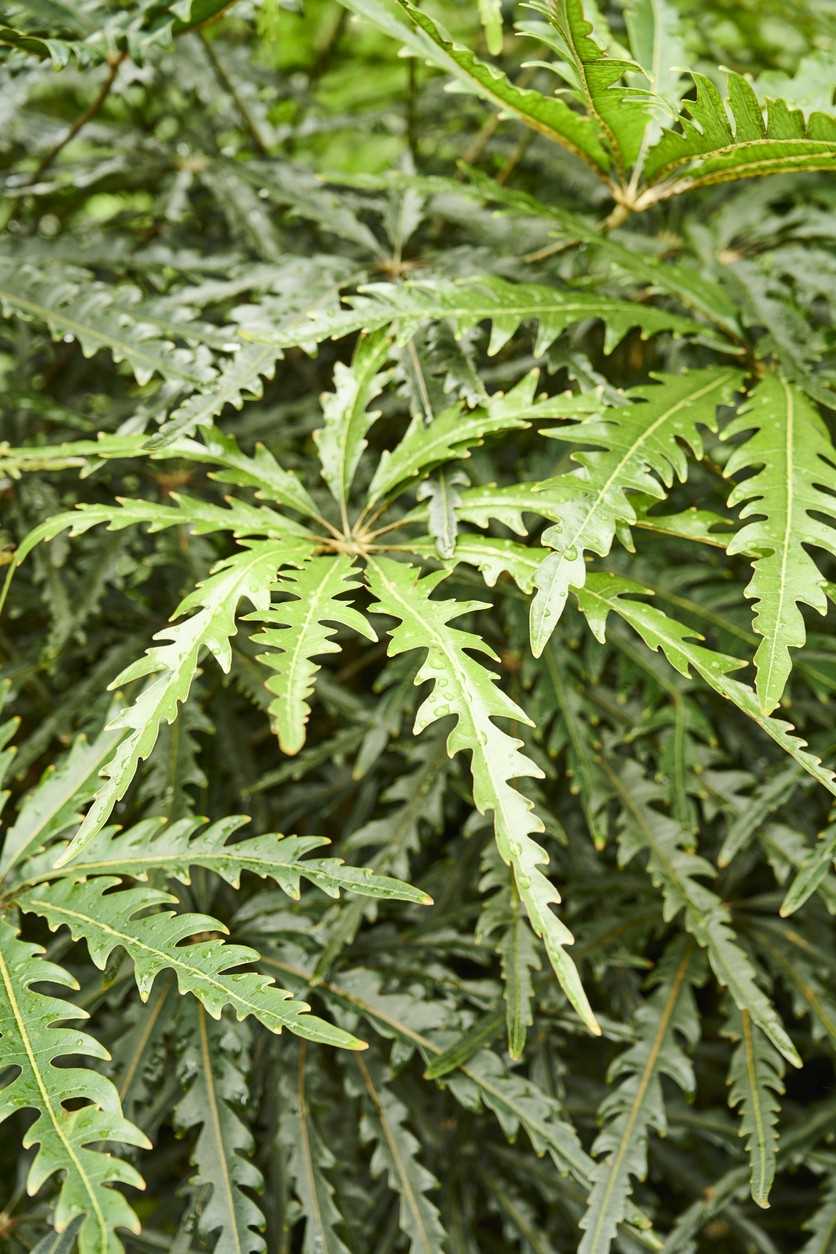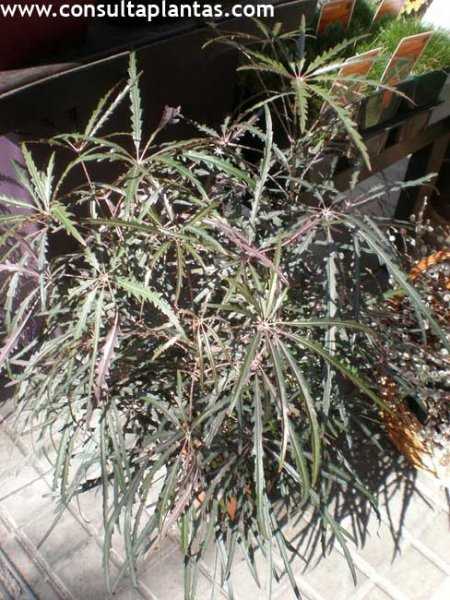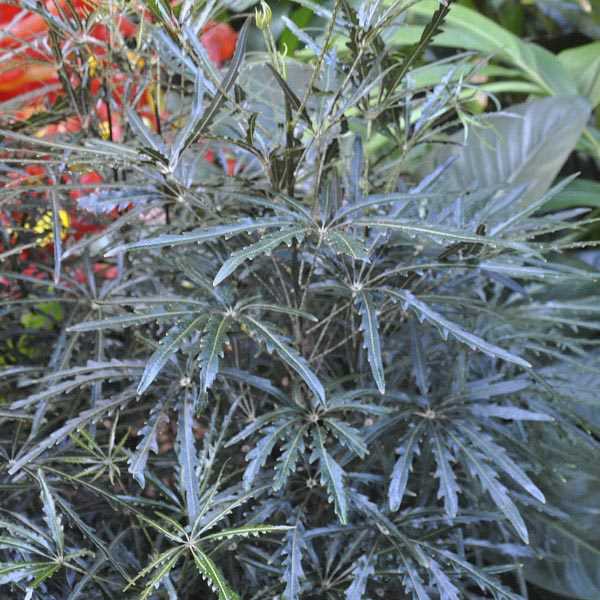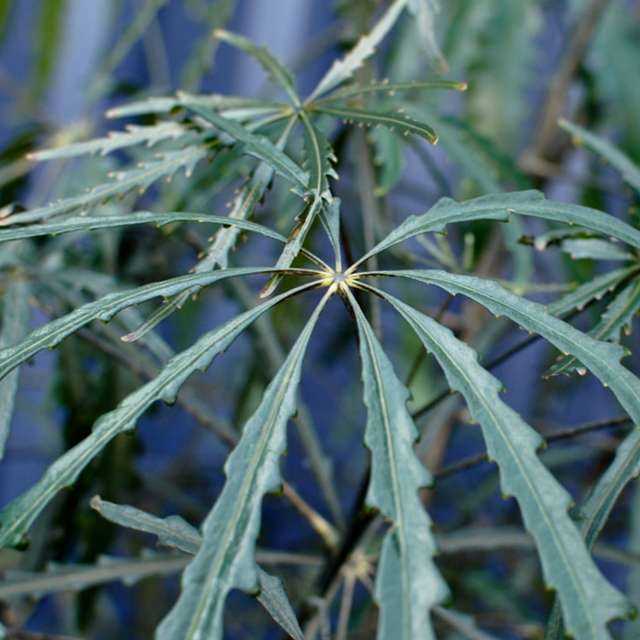- Care Tips for Dizygotheca
- Common Species of Dizygotheca
- Ideal Environment for Dizygotheca
- Light
- Temperature
- Humidity
- Watering
- Soil
- Fertilizer
- Pruning
- Pests
- Watering and Fertilizing Dizygotheca
- Watering
- Fertilizing
- Propagation of Dizygotheca
- Propagation by Stem Cuttings
- Propagation by Seed
- Common Problems and Solutions for Dizygotheca
- Pests
- Overwatering
- Low Humidity
- Insufficient Light
- Photos of Dizygotheca
- Q&A:
- What is Dizygotheca?
- How do I care for Dizygotheca?
- What are the different species of Dizygotheca?
- How tall does Dizygotheca grow?
- Can Dizygotheca be grown indoors?
- What are common problems faced by Dizygotheca plants?
- Where can I find photos of Dizygotheca plants?
- Video: How to grow False Aralia (Plerandra elegantissima)
Are you looking to add a touch of greenery to your home or office? Look no further than the Dizygotheca! This gorgeous plant, also known as Dizygotheca, is not only visually stunning, but it also requires minimal care, making it the perfect choice for both experienced and novice plant enthusiasts.
The Dizygotheca is native to tropical regions and is characterized by its beautiful, deep green leaves. With the right conditions, these leaves can grow up to 30 centimeters in length, creating an impressive display of foliage. Whether you choose to place it in a pot or let it grow as a bush, the Dizygotheca is sure to become a focal point in any room.
When it comes to care, the Dizygotheca is relatively low-maintenance. It thrives in bright, indirect light, so make sure to place it near a window where it can receive plenty of natural light. Additionally, it prefers well-draining soil and should be watered when the top inch of soil feels dry. Overwatering can lead to root rot, so it’s important to strike the right balance.
With its stunning foliage and easy care requirements, the Dizygotheca is a must-have for any plant lover. Whether you’re a seasoned gardener or just starting out, this plant is sure to bring beauty and joy to your space. So why wait? Bring home a Dizygotheca today and enjoy the benefits of owning this remarkable plant.
Care Tips for Dizygotheca
1. Light:
- Dizygotheca plants prefer bright, indirect light.
- Avoid placing them in direct sunlight as it can burn the leaves.
- Filtered light through a sheer curtain is ideal.
2. Temperature and Humidity:
- Dizygotheca plants thrive in temperatures between 65-75°F (18-24°C).
- Avoid exposing them to temperatures below 60°F (15°C) as it can cause damage.
- They prefer high humidity levels, so mist the leaves regularly or place the plant on a tray with water to increase humidity.
3. Watering:
- Water your Dizygotheca thoroughly, allowing the top inch of soil to dry out between waterings.
- Overwatering can lead to root rot, so make sure the pot has proper drainage.
- Water less during the winter months when growth slows down.
4. Soil:
- Use a well-draining, peat-based potting soil for your Dizygotheca.
- Good drainage is essential to prevent waterlogged soil.
5. Fertilizer:
- Feed your Dizygotheca with a balanced liquid fertilizer every 2-4 weeks during the growing season (spring and summer).
- Reduce or stop fertilizing during the winter months when growth is slow.
6. Pruning:
- Prune your Dizygotheca to maintain its shape and remove any dead or damaged leaves.
- Pruning can be done at any time of the year.
7. Propagation:
- Dizygotheca can be propagated through stem cuttings.
- Take a 4-6 inch (10-15 cm) cutting from the tip of the plant and remove the bottom leaves.
- Plant the cutting in a well-draining potting mix and keep it moist until roots develop.
8. Common issues:
- Dizygotheca is susceptible to spider mites, scale insects, and mealybugs. Check the leaves regularly for signs of infestation and treat them accordingly.
- Yellowing leaves may indicate overwatering or insufficient light.
- Brown leaf tips can be caused by dry air or underwatering.
By following these care tips, you can enjoy a healthy and vibrant Dizygotheca plant in your home or garden.
Common Species of Dizygotheca
Dizygotheca is a genus of tropical plants belonging to the family Araliaceae. There are several common species of Dizygotheca, each with its own distinctive features. Here are some of the most popular species:
Dizygotheca elegantissima: Also known as False Aralia or Threadleaf Aralia, this species is characterized by its delicate and feathery foliage. It has long, slender leaves that are divided into numerous small leaflets. The leaves are typically dark green, giving the plant an elegant appearance.
Dizygotheca kerchoveana: Commonly called the Variegated False Aralia, this species stands out due to its variegated leaves. The leaves have a mix of green and cream colors, adding a touch of brightness to any indoor space. It is a relatively compact plant, making it suitable for smaller rooms or office settings.
Dizygotheca pottingeriana: Also known as the Oakleaf Aralia, this species is named after its unique leaf shape, which resembles the leaves of an oak tree. The leaves are large and deeply lobed, giving the plant a bold and tropical look. It is a fast-growing species that can reach heights of up to 6 feet (1.8 meters).
Dizygotheca versicolor: Commonly called the Variegated Polyscias, this species features variegated leaves with shades of green, cream, and pink. The leaves have a glossy texture and are divided into multiple leaflets. It is a popular choice among indoor plant enthusiasts for its unique and eye-catching foliage.
These are just a few examples of the common species of Dizygotheca. Each species has its own unique characteristics and care requirements, so it is important to research and understand the needs of the specific species you choose to grow.
Ideal Environment for Dizygotheca

Creating the perfect environment for your Dizygotheca plant is crucial for its healthy growth and overall well-being. Here are some key factors to consider:
Light
Dizygotheca plants prefer bright, indirect light. They can tolerate some low light conditions, but too much direct sunlight can scorch their leaves. Place your plant near a north or east-facing window where it can get filtered sunlight throughout the day.
Temperature
Dizygotheca plants thrive in average room temperatures between 65-75°F (18-24°C). Avoid exposing them to extreme temperature fluctuations or drafts, as this can stress the plant and lead to leaf loss.
Humidity

These plants appreciate high humidity levels. You can increase humidity by placing a tray with water near the plant or using a humidifier. Misting the leaves occasionally can also help provide some moisture.
Watering
Dizygotheca plants prefer slightly moist soil, but they don’t like to sit in water. Water thoroughly when the top inch of soil feels dry, and make sure the pot has good drainage to prevent waterlogging. Avoid overwatering or allowing the soil to become bone dry.
Soil

Use a well-draining potting mix that retains some moisture but doesn’t compact. A mix of peat moss, perlite, and coarse sand or orchid bark works well for Dizygotheca plants.
Fertilizer

Feed your Dizygotheca plant with a balanced, water-soluble fertilizer diluted to half strength every 4-6 weeks during the growing season (spring and summer). Avoid fertilizing during the dormant period.
Pruning
Regular pruning helps promote bushier growth and prevents legginess. Trim off any dead, damaged, or yellowing leaves, and pinch back the tips of the stems to encourage branching.
Pests

Keep an eye out for common houseplant pests like aphids, spider mites, and mealybugs. If you notice any signs of infestation, isolate the plant and treat it with an appropriate insecticide or a mixture of water and soap.
Providing the right environment for your Dizygotheca plant will ensure its longevity and enhance its ornamental beauty. Remember to observe your plant closely and adjust its care as needed.
Watering and Fertilizing Dizygotheca
Watering
Dizygotheca plants require regular watering to keep the soil consistently moist. However, it is important to avoid overwatering as it can lead to root rot. Here are some tips for watering your Dizygotheca:
- Water your plant when the top inch of soil feels dry to the touch.
- Use room temperature water and water the plant until water flows out of the drainage holes in the pot.
- Empty the excess water from the saucer after watering to prevent the plant from sitting in water.
- During the winter months, reduce watering frequency as the plant enters a dormant period.
Fertilizing
Fertilizing your Dizygotheca plant is essential for its growth and overall health. Here are some guidelines for fertilizing:
- Use a balanced, water-soluble houseplant fertilizer.
- Dilute the fertilizer to half the strength recommended on the package instructions.
- Apply the fertilizer once a month during the growing season (spring and summer).
- Avoid fertilizing during the winter months when the plant is dormant.
Following these watering and fertilizing tips will help your Dizygotheca plant thrive and stay healthy.
Propagation of Dizygotheca
Dizygotheca can be propagated through stem cuttings or by seed.
Propagation by Stem Cuttings

To propagate Dizygotheca through stem cuttings, follow these steps:
- Choose a healthy and mature Dizygotheca plant with several leafy stems.
- Select a stem that is at least 6 inches long and has several leaves.
- Using a sharp and clean pair of pruning shears, make a clean cut just below a leaf node.
- Remove the lower leaves from the cutting, leaving only a few at the top.
- Optional: Dip the cut end of the stem in rooting hormone to promote faster root development.
- Prepare a well-draining potting mix and moisten it slightly.
- Make a hole in the potting mix and insert the cutting, ensuring that at least one node is below the soil surface.
- Press the potting mix gently around the cutting to secure it.
- Water the cutting thoroughly and place it in a bright location with indirect sunlight.
- Maintain the moisture level of the potting mix by watering when the top inch of soil feels dry.
- After a few weeks, the cutting should develop roots and new growth.
- Once the roots are established, the new Dizygotheca plant can be transferred to a larger pot or planted in the garden.
Propagation by Seed
Dizygotheca can also be propagated by seed, although this method is less common. Follow these steps to propagate Dizygotheca from seed:
- Collect fresh seeds from a mature Dizygotheca plant.
- Prepare a well-draining potting mix and moisten it.
- Sow the seeds on the surface of the potting mix.
- Lightly cover the seeds with a thin layer of potting mix.
- Keep the potting mix consistently moist but not waterlogged.
- Place the pot in a warm location with indirect sunlight.
- Germination should occur within a few weeks.
- Once the seedlings have grown several leaves, they can be transplanted into separate pots or planted in the garden.
Propagation of Dizygotheca can be a rewarding process and can help expand your collection of these beautiful plants. Whether you choose to propagate through stem cuttings or by seed, with proper care and attention, you can successfully propagate and grow new Dizygotheca plants.
Common Problems and Solutions for Dizygotheca
Pests
Dizygotheca plants can be susceptible to pest infestations. Some common pests that may affect Dizygotheca include:
- Spider mites: These tiny pests can cause yellowing leaves and webbing on the plant.
- Mealybugs: Mealybugs are small, white insects that can cluster on the stems and leaves of the plant.
- Aphids: Aphids are small insects that can feast on the plant’s sap, causing stunted growth and distorted leaves.
To treat pest infestations on Dizygotheca plants, you can:
- Inspect the plant: Carefully examine the plant for signs of pests, such as webbing, small insects, or white cottony masses.
- Remove pests manually: Use a soft cloth or cotton swab to manually remove the pests from the plant.
- Use insecticidal soap: Apply an insecticidal soap to the plant according to the product instructions. This can help control pests.
Overwatering
Overwatering is a common issue with Dizygotheca plants, which can lead to root rot and other problems. Signs of overwatering include yellowing leaves, wilting, and a foul smell.
To prevent overwatering:
- Check soil moisture: Before watering, check the moisture level of the soil by sticking your finger about an inch deep into the soil. If it feels dry, it’s time to water.
- Water sparingly: Only water your Dizygotheca plant when the top inch of soil feels dry. Avoid waterlogging the plant by ensuring proper drainage.
- Adjust watering frequency: Depending on the climate and season, you may need to adjust the frequency of watering. For example, reduce watering in winter when the plant is dormant.
Low Humidity
Dizygotheca plants prefer high humidity levels. Low humidity can cause the leaves to turn brown and crispy at the edges.
To increase humidity for your Dizygotheca:
- Mist the leaves: Use a spray bottle to mist the leaves regularly. This increases the humidity around the plant.
- Use a humidifier: Place a humidifier near the plant to create a more humid environment.
- Group plants together: Grouping plants together can create a microclimate with higher humidity levels.
Insufficient Light
Dizygotheca plants require bright, indirect light to thrive. Insufficient light can cause the plant to become leggy and weak.
To provide sufficient light for your Dizygotheca:
- Place near a window: Position your plant near a window that receives bright, indirect light.
- Use grow lights: If natural light is limited, you can supplement with grow lights to provide the necessary light intensity.
- Avoid direct sunlight: Direct sunlight can scorch the leaves, so it’s best to avoid placing the plant in direct sunlight.
Photos of Dizygotheca
Here are some stunning photos of Dizygotheca plants:

This photo shows a mature Dizygotheca plant with its lush green foliage and distinctive leaf shape.

These close-up shots of Dizygotheca leaves highlight their beautiful pattern and texture.

Here, you can see the unique branching pattern of the Dizygotheca stems.

Although Dizygotheca is primarily grown for its foliage, it can occasionally produce small, inconspicuous flowers as seen in this photo.
These photos showcase the beauty and diversity of Dizygotheca plants, making them a popular choice for indoor and outdoor gardens alike.
Q&A:
What is Dizygotheca?
Dizygotheca is a genus of plants in the Araliaceae family. It is commonly known as Dizygotheca or False Aralia.
How do I care for Dizygotheca?
Dizygotheca plants require bright indirect light, regular watering, and well-draining soil. They also appreciate high humidity and regular fertilization during the growing season.
What are the different species of Dizygotheca?
There are three commonly recognized species of Dizygotheca: Dizygotheca elegantissima, Dizygotheca kerchoveana, and Dizygotheca filicifolia.
How tall does Dizygotheca grow?
Dizygotheca plants can grow up to 4 feet tall under optimal conditions.
Can Dizygotheca be grown indoors?
Yes, Dizygotheca can be grown as an indoor plant. It thrives in bright indirect light and can be a great addition to indoor spaces.
What are common problems faced by Dizygotheca plants?
Some common problems faced by Dizygotheca include yellowing leaves, root rot, and pest infestations. These issues can be managed by adjusting watering practices, improving drainage, and addressing pest problems promptly.
Where can I find photos of Dizygotheca plants?
You can find photos of Dizygotheca plants by conducting a simple image search online or by referring to gardening books and websites that feature houseplants.
Video:
How to grow False Aralia (Plerandra elegantissima)











